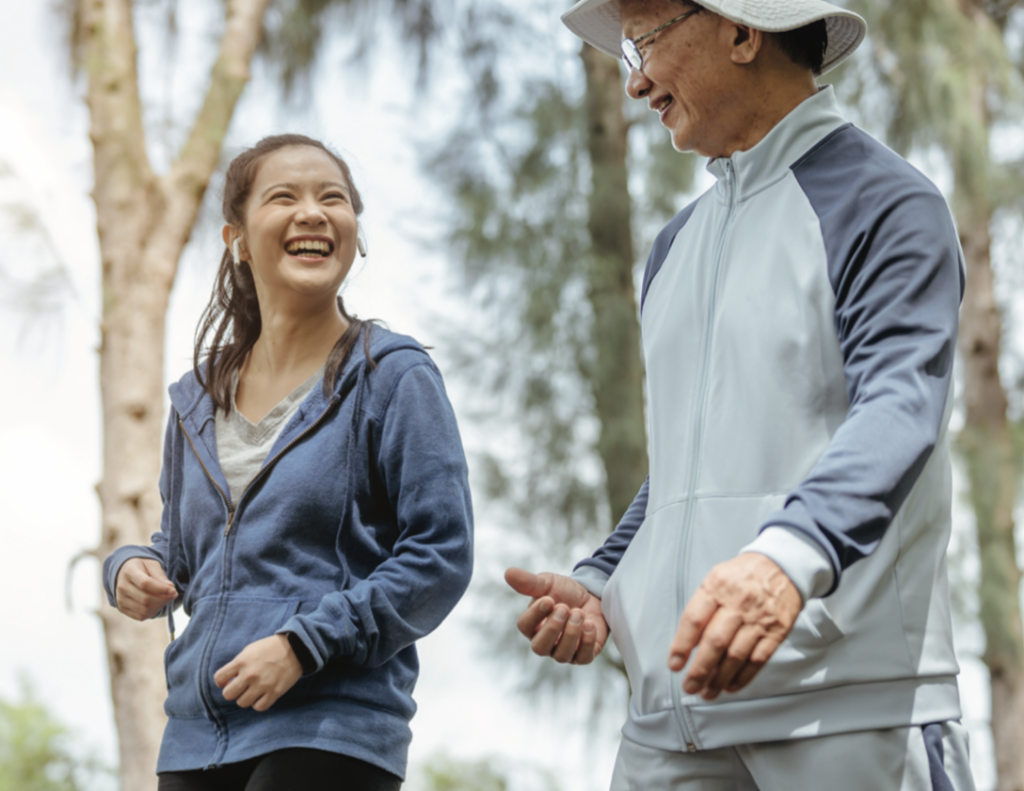
Physical Activity At Any Age
By Jenny L. Workman, Community Wellness Manager
If you’ve spent the first half of your life as a couch potato, and think it’s too late for exercise to do your body and mind any good, think again!
Years of research studies confirm that exercise can lower risk for an early death, even if you wait until later in life. Anyone can begin exercising regularly at any age. Exercise is crucial to maintain a youthful and healthy body. Middle-aged individuals and seniors who do regular cardiovascular and strength training exercise are more likely to build bone and muscle, have stronger immune systems, more efficient lungs, better blood pressure, and counteract the weakness that comes with age. Those who exercise regularly can also ease the symptoms of arthritis, osteoporosis, pulmonary diseases, and Type 2 diabetes. By building strength, you will improve balance, stability, flexibility and overall quality of life.
For most healthy adults, the Department of Health and Human Services recommends these exercise guidelines:
AEROBIC ACTIVITY
Get at least 150 minutes of moderate aerobic activity or 75 minutes of vigorous aerobic activity a week, or a combination of moderate and vigorous activity. The guidelines suggest that you spread out these minutes over a week. To provide even greater health benefit and to assist with weight loss or maintaining weight loss, at least 300 minutes a week is recommended. But even small amounts of physical activity is helpful. Being active for short periods of time throughout the day can add up to provide a health benefit. Moderate aerobic exercise includes activities such as brisk walking, biking, swimming and mowing the lawn. Vigorous aerobic exercise includes activities such as running, heavy yard work and aerobic dancing.
STRENGTH TRAINING
Do strength training exercises for all major muscle groups at least two times a week. Aim to do a single set of each exercise using a weight or resistance level heavy enough to tire your muscles after about 12 to 15 repetitions. Strength training can include use of weight machines, your own body weight, heavy bags, resistance tubing or resistance paddles in the water, or activities such as rock climbing.
Short on long stretches of time?
Even brief bursts of activity offer benefits. If you can’t fit in a 30-minute walk during the day, take a few 5-minute walks instead. Any activity is better than none – what’s most important is that you make regular physical activity part of your life.
To learn more about how 30 minutes of walking every day can make a big difference, I encourage you to watch Dr. Mike Evan’s video “23 and 1⁄2 Hours: What is the single best thing we can do for our health” at bit.ly/bestthingin30.
It’s also important to reduce your sitting time – the more hours you sit each day, the higher your risk of metabolic problems. Our bodies aren’t made to be sedentary. Even if you get the recommended amount of daily physical activity, sitting too much can negatively impact your health and longevity. You don’t have to sign up for a gym membership if that’s not your thing. Find something that fits your interests, abilities and lifestyle. Try to get at least 30 minutes of moderate physical activity every day. If you want to lose weight, maintain your weight loss, or meet specific fitness goals, you may need to exercise for longer of more often.
While you may not be a spring chicken, it doesn’t mean you can’t enjoy an active, healthy lifestyle. Take care of your body and it will take care of you. You do this by putting in the time and making exercise a habit. If you don’t do it for yourself, do it for those who love you!
If you have questions about exercise or overall well-being, feel free to reach out at Jenny.Workman@boone.health.